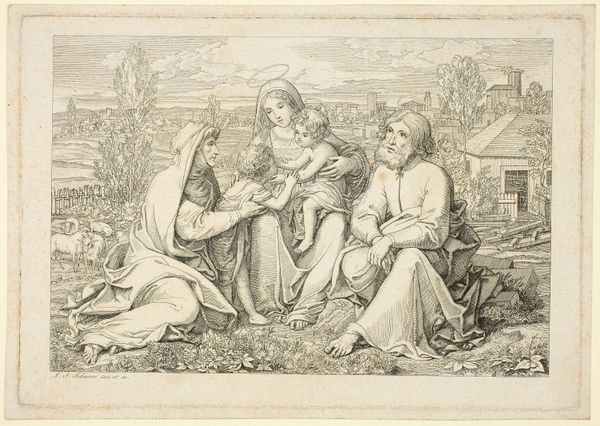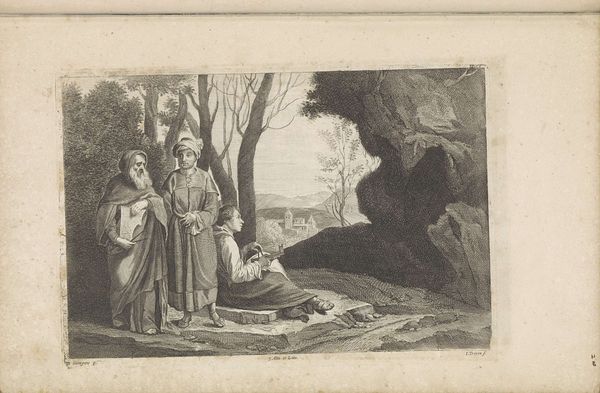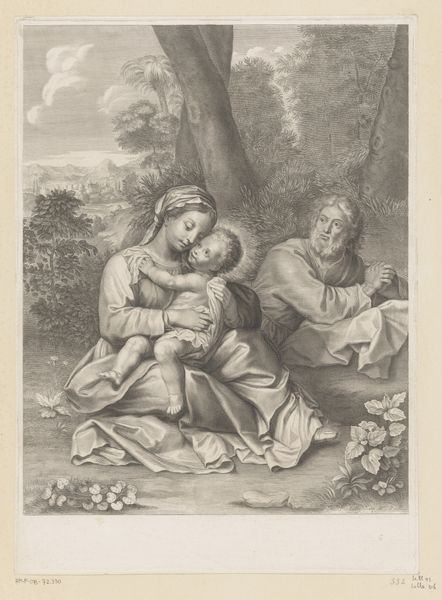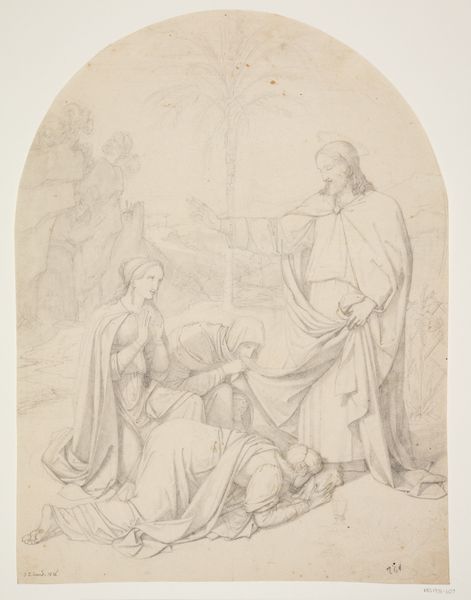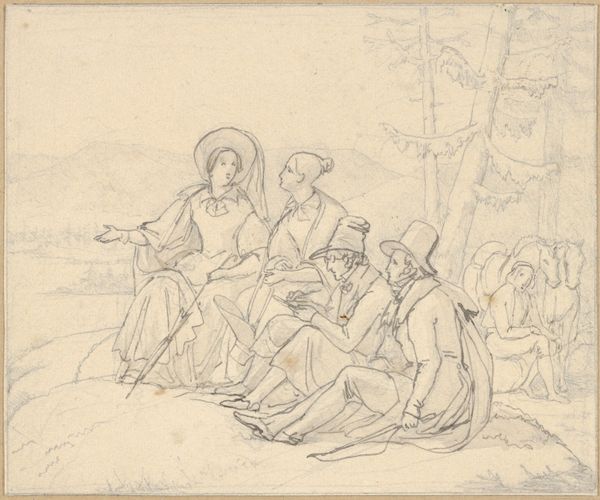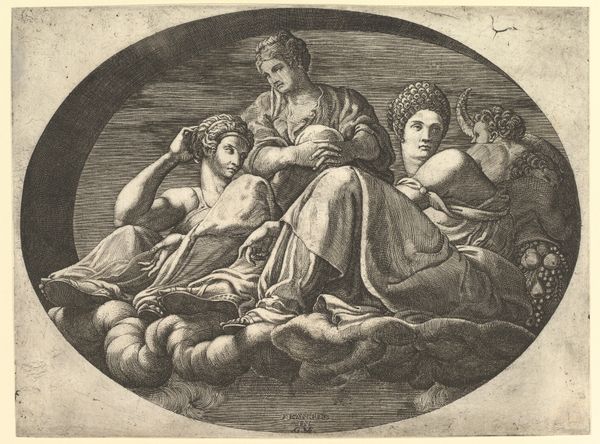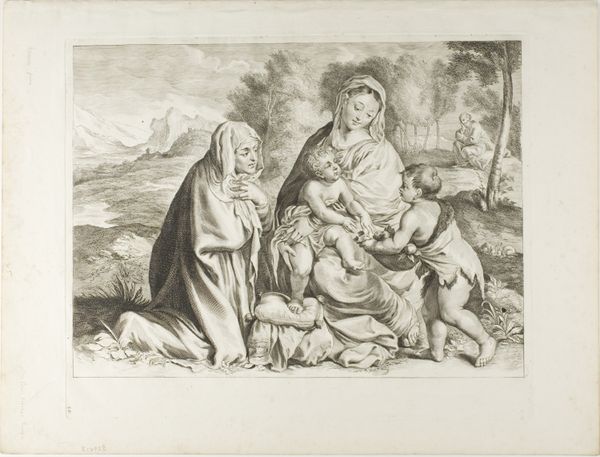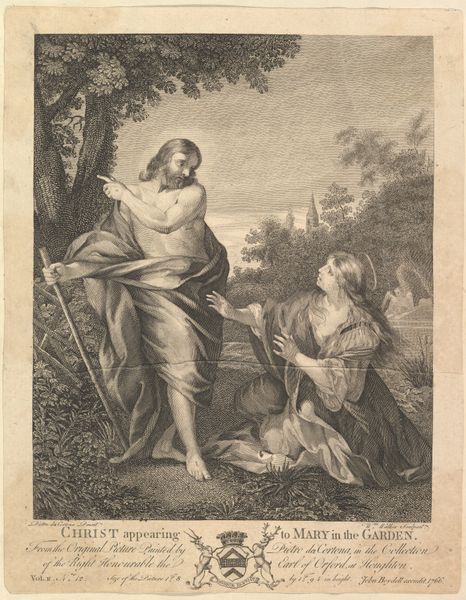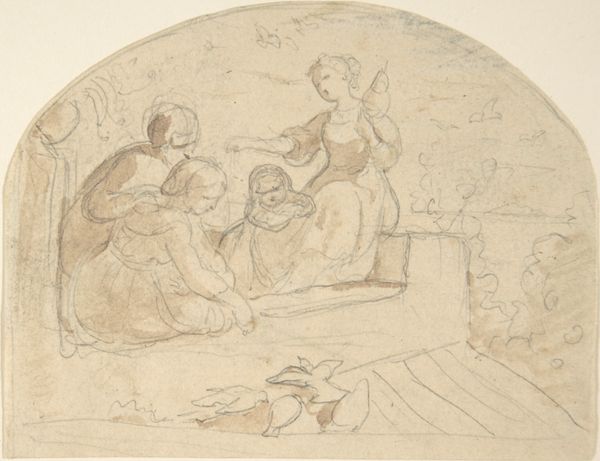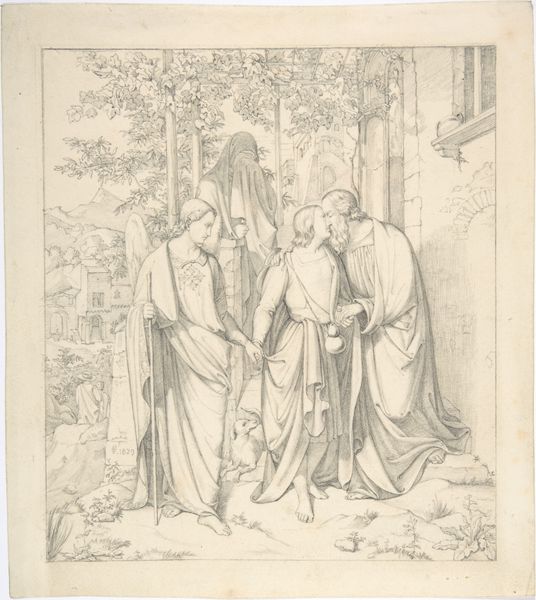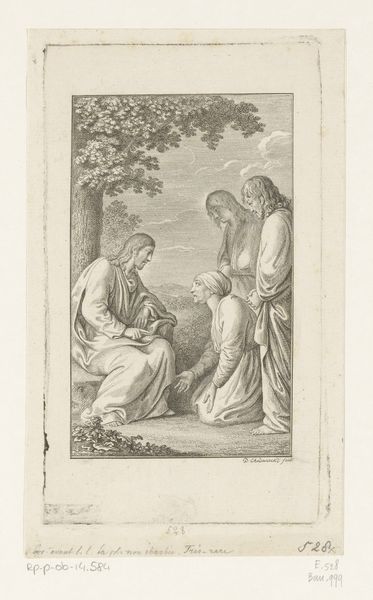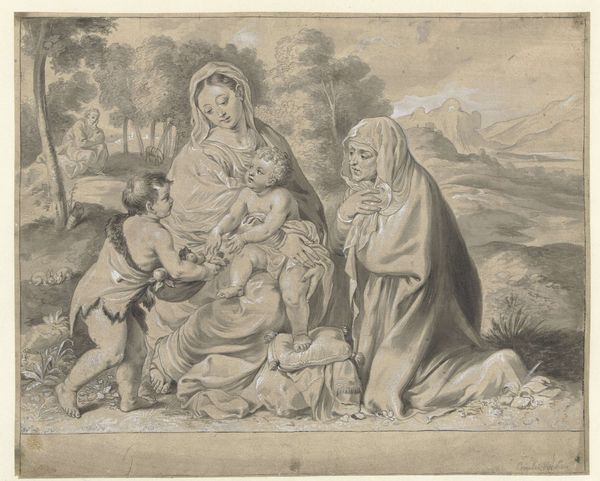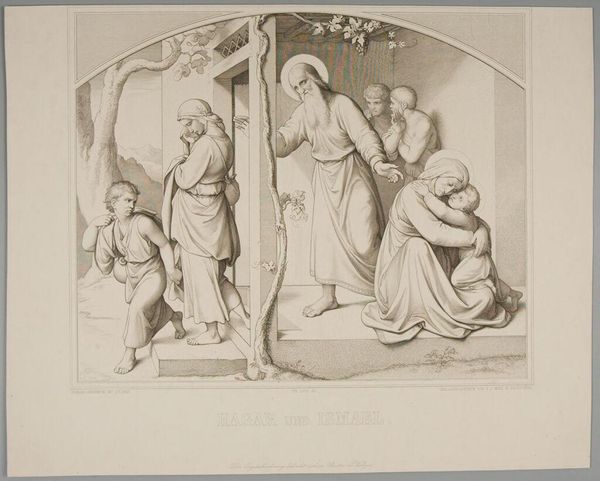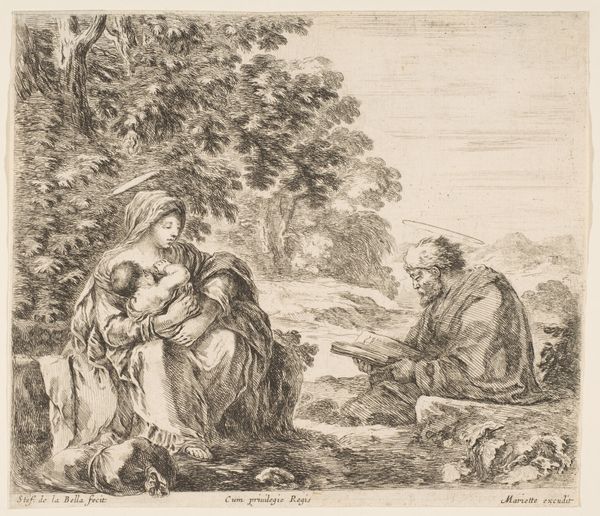
drawing, print, pencil
#
drawing
#
allegory
# print
#
pencil sketch
#
landscape
#
figuration
#
pencil
Dimensions: sheet: 12 1/2 x 14 1/16 in. (31.8 x 35.7 cm)
Copyright: Public Domain
Editor: This is Heinrich Maria von Hess's 1819 drawing, "Allegories of Faith, Hope, and Charity," a preparatory study rendered in pencil. It's quite striking; the figures seem both serene and a bit melancholic. How do you interpret this work, especially considering its allegorical nature? Curator: Hess situates these allegorical figures within a charged sociopolitical landscape, in post-Napoleonic Europe. Considering this context, it is essential to ask, how does Hess navigate the re-establishment of religious authority and its impact on societal values? The landscape almost appears like a stage… What stories are these figures performing and for whom? Editor: That's a fascinating perspective. I was initially drawn to the tranquil arrangement and idealized forms but your reading suggests a more critical lens. It really adds layers of complexity. Are the artist's choices rooted in particular ideologies or is it simply reflective of his artistic exploration? Curator: The aesthetic choices in Hess's works do echo broader conservative ideals, like those underpinning the rise of Nazarenism. And that movement consciously rejects the secularism associated with the Enlightenment. Where do we situate female figures? Are these images about moral instruction and the representation of power dynamics? Editor: It’s unsettling to consider the drawing now. It brings the weight of historical context on this delicate scene. How the figures could embody conservative ideals feels relevant to today’s discussions. Curator: Exactly. Von Hess prompts questions about art's entanglement with sociopolitical and religious discourses. This dialogue challenges us to consider the visual rhetoric through which ideologies are communicated. How is "virtue" visualized, and whose virtues are being promoted? Editor: I appreciate how you’ve pushed me to question my initial aesthetic response and see the drawing as an artifact deeply embedded in its time, inviting an active, critical engagement. Curator: That active critical engagement is everything. Art demands that we grapple with uncomfortable questions and confront power dynamics encoded within seemingly beautiful surfaces.
Comments
No comments
Be the first to comment and join the conversation on the ultimate creative platform.
